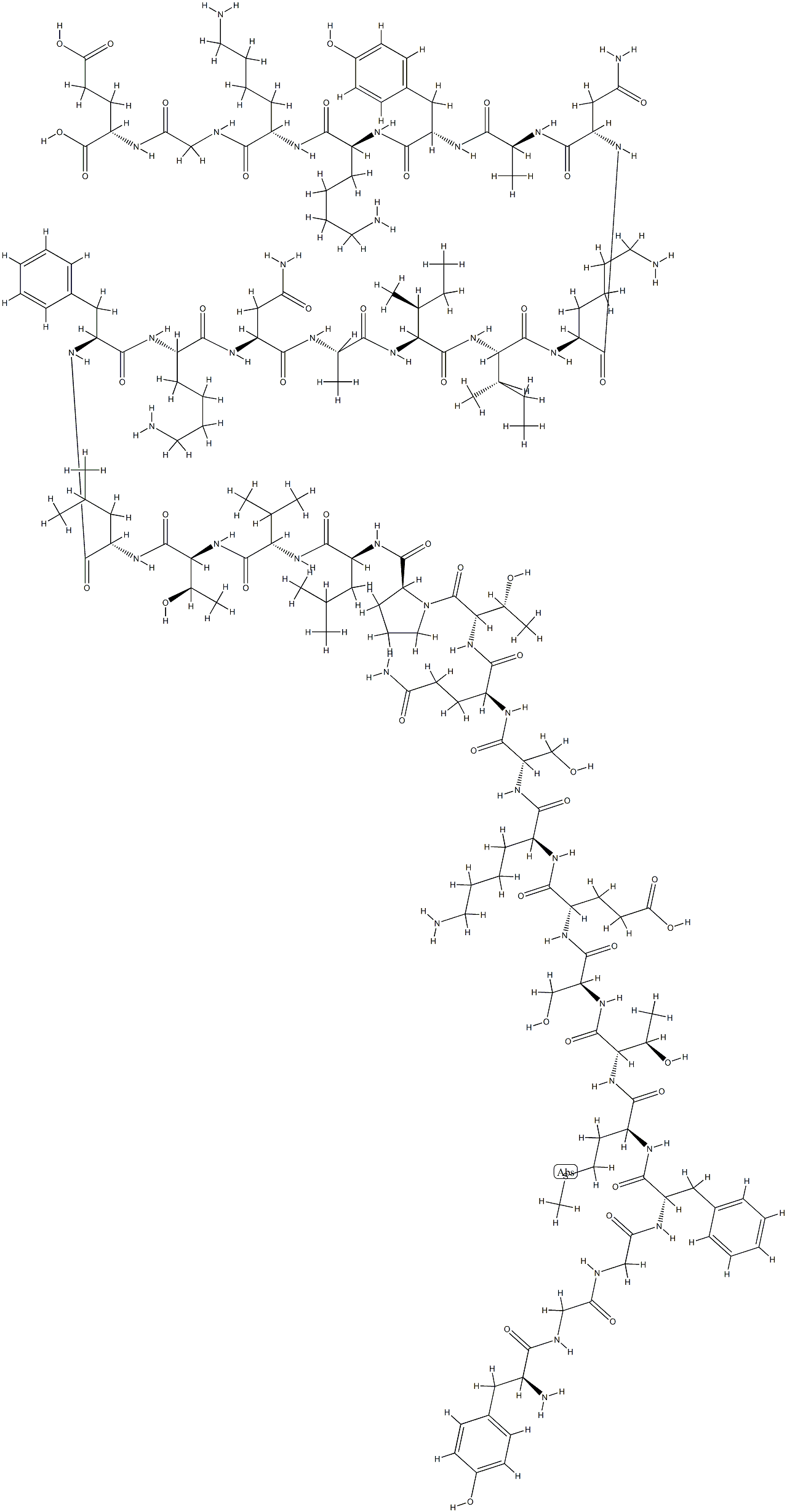beta-endorphins produce analgesia by binding to opioid receptors (particularly of the mu subtype) at both pre- and post- synaptic nerve terminals, primarily exerting their effect through presynaptic binding. In the central nervous system, beta-endorphins similarly bind mu-opioid receptors and exert their primary action at presynaptic nerve terminals. It is a potent pain suppressant.
β-Endorphin is a potent endogenous opioid protein that is derived from propiomelanocortin, a protein found in the brain, anterior pituitary, skin, immune system, and other peripheral sites. β-endorphin, however, is localized to the brain and spinal cord. It is one of the major opioid peptides, and is the derivative of the C-terminal of β-lipotropin. It is made of 31 amino acids.
β-Endorphin acts as a ligand for both μ and δ opioid receptors in different parts of the brain. It is released in response to painful stimuli and has potent antinociceptive activity. When given supraspinally, this activity is mediated through its action on ε-opioid receptors in brain that results in the release of Met-enkephalin. This activity is also mediated by its interaction with δ2-opioid receptors in the spinal cord. When introduced intrathecally, this function is an outcome of its interaction with μ and κ-opioid receptors in the rat. In autoimmune disorders, the elevated production of cytokines results in the production of β-endorphin, in pituitary and lymphocytes. This acts as a negative regulator of antibody production, and is thus, implicated in autoimmune diseases.

